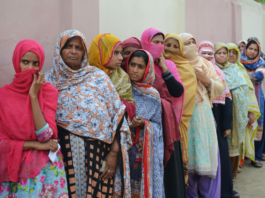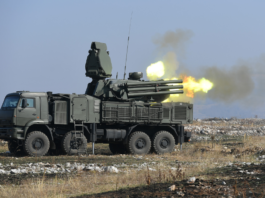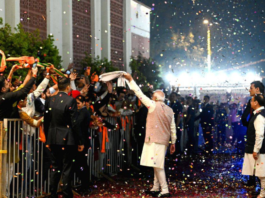
Agriculture-related policymaking is beset with a number of myths, misunderstandings, and presumptions. In contrast to other domains where lobbyists guarantee that their existing methodologies find a way into policy formulation, the agricultural sector is primarily controlled by “bad” actors; these entities comprise research organisations and non-profits that are disconnected from reality yet control policy. This is the reason why outdated models still rule thinking and policymaking.
Learning or creating something new is hampered by institutional knowledge. Antiquated mental models compel us to adapt new information into them, much like stereotypes do. The problem is that these models tend to cause more problems than they solve over time if they are not updated or if these assumptions are not questioned from the perspective of public policy.
One such way of thinking is to try to fit economic roadmaps that other nations adopted decades ago into a country the size of India. Many of our models for formulating policy continue to hold that shifting people from agriculture to manufacturing and services is the path to a developed economy.
W. Arthur Lewis, an economist, created the Lewis Model for Structural Development in the middle of the 1950s, and it continues to serve as the foundational premise for this policy creation model.
Lewis, a West Indian economist, improved these models for England and thought any developing nation could use them. For this, he was awarded the Nobel Prize, and the rest of the world still adopts his philosophy.
With its current population of about 67 million, the model was constructed for an economy of about 50 million people using pre-war data from England.
In a world where automation has transformed manufacturing jobs and artificial intelligence (AI) is rapidly transforming the services sector, an economic model that is at least seventy years old is no longer relevant. It is undoubtedly inapplicable for drafting policies that advocate for the 400 million or so Indian farmers to switch from agriculture to manufacturing and services.
The Lewis model predicts that the agricultural sector will be used for subsistence in the early phases of a nation’s development. Agricultural labour is generally underutilised, and its marginal productivity gradually decreases over time. Agriculture’s share of the national revenue decreases as manufacturing and services increase, while the manufacturing/services share increases.
Underutilised agricultural labour from previous industries is also a result of the GDP shifting from agriculture to other sectors. This raises wages and indicates that the economy is expanding. Its main premise is that labour is moving away from agriculture, and those who stay have access to larger landholdings, which allow them to afford industrialization and larger scale production.
Let’s take a moment to determine whether this is occurring in India. Due to population growth and the fragmentation of landholdings caused by the growth and division of families, our manufacturing sector has expanded, but landholding has decreased rather than increased. In most farming families, the men leave behind their spouses, kids, parents, and siblings when they relocate to the city. Their only means of surviving the unpredictability of farming is the few people’s guaranteed income from cities.
There would be far fewer people living in rural areas if the Lewis model continued to function as intended. After all, the manufacturing and service sectors have experienced tremendous growth, now making up over 80% of the economy’s gross value added and employing 56% of the workforce.
Four structural paths—the Farmer Developing Path, the Lewis Path, the Lewis Trap, and the Farmer Excluding Path—that farmers may find themselves on are highlighted in a 2022 NITI Aayog paper. The Labour Income Ratio (LIR), which measures a region’s reliance on agriculture in relation to its economy and workforce, was first used by Dorin et al. to identify these paths. The LIR is the ratio between agriculture’s share of value in the total value added to an economy and the share of farmers in the total labour employed.
Farmers in a region can be grouped into one of the four structural paths using heuristics based on changes in LIR over time. A region is likely to be on the Lewis Path if its LIR is high and rising over time; it is likely to be on the Farmer Excluding Path if its LIR is low and falling over time; it is likely to be on the Lewis Trap if its LIR is high but falling over time; and finally, it is likely to be on the Farmer Developing Path if its LIR stays stable over time. LIRs were used by the NITI Aayog paper to allocate each Indian state to a specific path.
If Lewis’s projections for the agricultural industry come to pass, farmers would follow the Lewis Path, which is the structural course that would lead them there. According to a 2022 NITI Aayog paper, the number of farmers decreases along the Lewis Path, leaving the remaining farmers with larger landholdings that allow them to produce more.
As fewer people work as farmers, agricultural productivity increases at a rate faster than total agricultural output. Since all farmers are farming the same amount of land, even though individual farmers are producing more, the rate of increase in agricultural output isn’t as high, and prices for agricultural output stay the same. Because there are fewer farmers as a percentage of the workforce, LIR tends to be 1 in this case, but agricultural output as a percentage of the total value added to the economy remains relatively constant.
Because of the relatively high growth in demand for agricultural products, the Farmer Developing Path shows an increase in the share of agriculture’s value without a significant change in the share of value of the other sectors. Compared to other economic sectors, agricultural workers experience higher rates of wage growth along this path. The agricultural industry employs a growing number of workers.
Workers return to the agricultural industry as wages rise in this field. However, the number of people entering this sector does not grow at a faster rate than the demand for agricultural products and the value that agriculture is adding to the economy because there is not enough land available for everyone who wants to farm their own land. According to the Farmer Developing Path, the LIR leans towards 1.
The Lewis Path and the Lewis Trap are nearly identical. The amount of land available for cultivation does not increase in proportion to the growth in the agricultural workforce. There is a pay gap between agricultural and non-agricultural labour because labour productivity in agriculture increases more slowly than overall labour productivity.
The number of farmers falls in the Farmer Excluding Path as the earnings of the agricultural and non-agricultural sectors diverge. Compared to workers in other sectors, farmers are comparatively poorer and number fewer.
According to data presented in the NITI Aayog paper, every Indian state except for three was on the negative structural paths of the Lewis Trap or Farmer Excluding as of at least 1993. The nation was on the Lewis Trap path overall since at least 1993; however, it entered the Farmer Excluding path in 2010. The number of workers in agriculture was rising, not decreasing.
According to the paper, this might be a temporary consequence of the Covid pandemic, which caused a large number of urban workers to migrate back to their rural homes. Despite an increase in land productivity, India’s agricultural labour productivity is growing more slowly than that of its non-agricultural labour due to the declining sizes of landholdings.
Despite only making up 20% of the nation’s GDP, 44% of India’s labour force is employed in the agricultural sector. In order to close the income gap between the agricultural and non-agricultural sectors, it would be beneficial, according to the NITI Aayog paper, to make sure that the labour force employed by the agricultural sector declines to a level that approaches its GDP contribution. Will this labour be absorbed by the manufacturing and service sectors, though?
The Lewis model’s generally acknowledged route of economic development involves labour shifting from agriculture to manufacturing and then to the service sector. 25% of the labour force in the nation was employed in the manufacturing sector as of 2021. This represents a substantial portion of the labour force—roughly 120 million people—but there is a concerning trend in the manufacturing sector’s employment that indicates it is not able to accommodate as many workers. Additionally from an NITI Aayog paper is this.
According to a 2014 study, the organised manufacturing sector’s average labour intensity started to decline in the early 1980s and kept going down until the 2000s. The labour-intensive manufacturing subsectors had more than five workers per real fixed capital at the beginning of the 1980s. This indicates that there were more than five employees in these sectors for every unit of capital. This same value had decreased to less than one by 2008. The labour intensity of the other, less labor-intensive sectors was also declining.
The labour intensity of the manufacturing sector decreased from an average of 1.45 to 0.33 between 1980 and 2010. Trade reforms that lower the cost of machinery compared to labour cause manufacturers to substitute labour more often for machinery and automation, which results in this decline in labour intensity. This indicates that employment creation from investments in the manufacturing sector has decreased. The employment growth in the sector was only 2% between 2011 and 2021. It is improbable that this trend will reverse itself in the near future because mechanisation is becoming more efficient and less costly over time.
In India, the manufacturing sector produces less value added to the GDP and employs fewer people than the service sector. By 2020, it accounted for thirty-eight million, or thirty-eight percent, of the workforce. Between 2011 and 2019, the YoY rate of increase averaged almost 0.55%. India’s service industry is distinct from that of other superpowers. Many nations have service sectors that employ people at a rate that is comparable to the gross value added to each nation’s GDP by those sectors.
In the US, the employment in the service sector was at 78% and 79% in 2007 and 2017, respectively, and the share of services to GVA was 77% and 8% in 2007 and 2017. In Germany, the service industry employed 68% and 72% of the labour force in 2007 and 2017, respectively, while its GVA was 69% and 68% in those same years. Similar trends can be found in numerous other nations.
In contrast, services accounted for 48% and 54% of India’s GVA in 2007 and 2017, respectively, but they only employed 26% and 34% of the country’s workforce. Because of this characteristic of the Indian service sector, the sector absorbs less labour than it otherwise would. As artificial intelligence (AI) technologies advance, it makes sense to anticipate a further decline in the number of workers employed in the service sector relative to the value added to the economy.
India, the most populous country in the world, will need to shift more workers out of agriculture than other nations following a similar course. The fact that India’s service sectors typically employ fewer people than anticipated exacerbates the situation; it is irrational to anticipate that manufacturing will hire more people. For the past thirty years, India’s manufacturing sector has seen a decrease in labour intensity; it is unlikely that this trend will reverse to allow for more labour to enter the sector. India must therefore consider alternatives to the Lewis model of a developed nation and consider using its agricultural labour force for agricultural purposes.
We must begin considering public policies that do not result in the displacement of agricultural labourers or view small farms as a problem; instead, we must consider models that increase their productivity and sustainability, reduce their reliance on industrial inputs, and increase their revenue. Large farms should not be recommended by economists as a solution to the issue of agricultural labour shortages. NGOs and groups attempting to alleviate poverty in rural areas ought to examine models for labor-intensive rural areas. India’s economic engine need not only be fueled by its cities; dispersed production models in rural areas can also serve as a blueprint for the country’s growth.
Rather than trying to emulate China or Europe when neither is feasible, we should start asking questions that are more in line with our own demographic, economic, and geographic realities. Rather than copying and pasting our global models and presumptions to fit India, let’s begin solving for Bharat.
Rather than creating an Indian avatar of what the West deems developed, we ought to be thinking and acting for Bharat.



